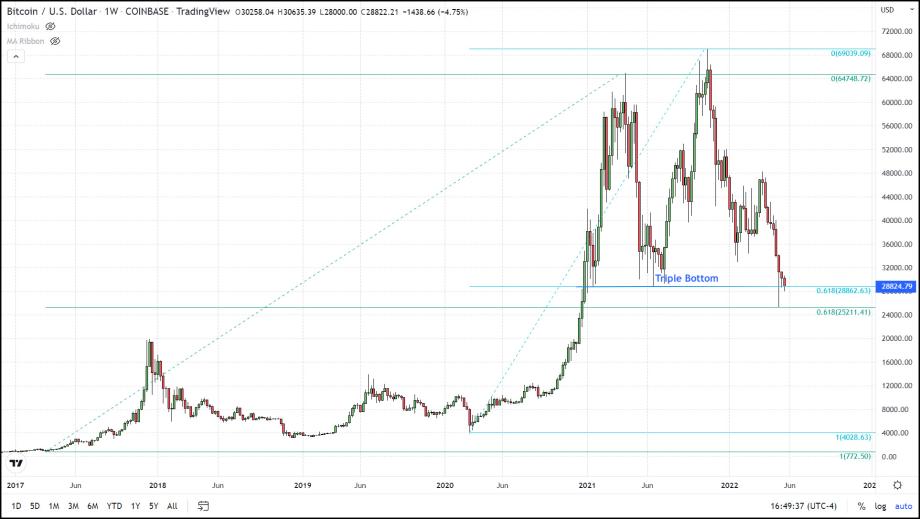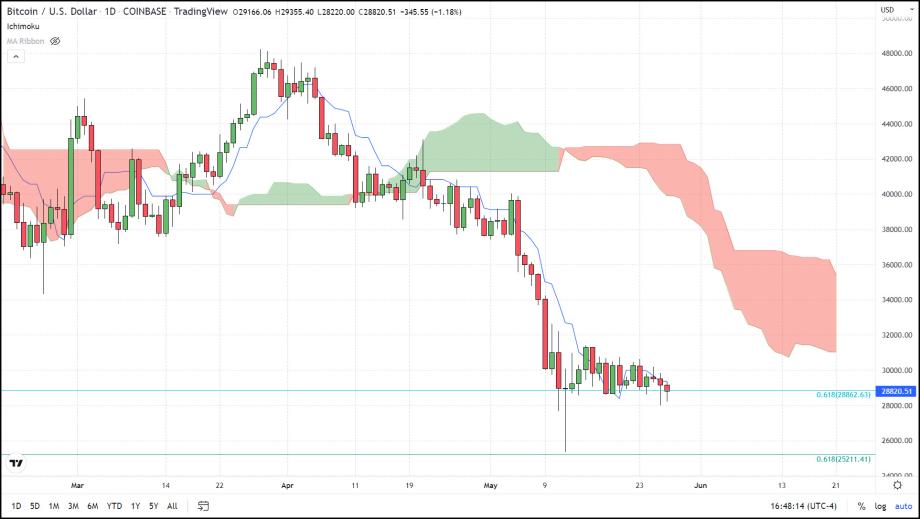Bitcoin Holds on to True Triple Bottom

Bitcoin is now forming its ninth red weekly candle, having broken through key support levels of $44k last month and $37,500 in May, declining by $15,000 the last two months.
When we do a Fibonacci retracement from the lows preceding the last two parabolic rallies (2017, 2020 – 2021) and compare them to the highs achieved in the second ATH made from that point, we get some very interesting numbers. The first retracement in black has its 61.8% level right at the recent lows of $25,211. The second retracement in blue gives us a 61.8% at $28,862, the price which we are labeling as a triple bottom.
A bounce off of a 61.8% retracement can be seen as a bullish sign. Visa-versa, a rejection at a 61.8% level can serve as a bearish signal. For that reason, BTC’s defense of this key Fibonacci level and the triple bottom is the most critical battle for Bitcoin bulls. The fact that this support has remained intact is one of the few technical arguments for Bitcoin remaining in a bullish mode. Despite the swift beating that Bitcoin has taken recently, only one day since 2021 has BTC closed barely below this critical support of $28,860.
As of 4:20 ET, Bitcoin is currently trading at $28,900 after recovering from lows of $28,300 earlier today. Even on May 12, when we hit the lowest price since Dec. 2020, the small body of the candle actually closed above the $28,886 retracement/support level. Also, let’s not forget that this level did serve as a bottom in the Summer of last year before rallying to a new ATH.
Storm clouds on the horizon
It's not all sunshine and roses when we zoom in on a daily chart. The Ichimoku Cloud tool is forecasting lower prices as being highly likely due to the size of the cloud and that it is above pricing.
“The Cloud is an integral part of the technical indicator as a whole and helps traders and investors identify the specific calculations made to the chart. Price below the cloud indicates a downward trend, whereas price above the cloud indicates an uptrend. These trend signals can strengthen if both the cloud and the price are moving in the same direction. Similarly, the signals can weaken if the cloud is moving in the opposite direction.” -Trading View
My cloud charts do not include some of the normally included lines, such as the baseline and the lagging span. This is done on purpose to make the chart less chaotic and easier to decipher. The one line I do leave in beside the two that form the clouds is the conversion line that is shown in blue and this short-term moving average of sorts has proven to be resistance for BTC for the last three days.

